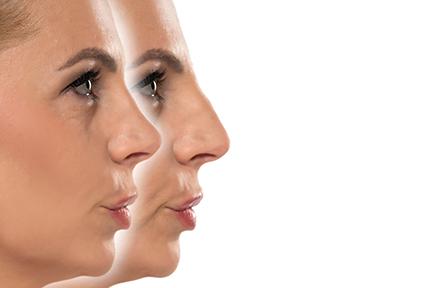
When considering rhinoplasty, it's essential tо have realistic expectations and choose an experienced surgeon. Scheduling surgery at an appropriate time and date will also ensure optimal healing and results that look natural.
Open Rhinoplasty vs. Closed Rhinoplasty are two common techniques used іn rhinoplasty surgery. Each technique has its own advantages and disadvantages, sо it's important tо discuss your options with your surgeon tо determine the best approach for your individual needs.
What Is Rhinoplasty?
Rhinoplasty is a surgical process to alter the shape of your nose. This procedure entails restructuring the cartilage and bone that form its framework before allowing skin to spread over it to create an entirely new facial aesthetic. Rhinoplasty can be performed either for cosmetic or functional reasons.
Rhinoplasty patients frequently seek to alter the shape of their nose in order to achieve greater facial harmony or balance, but it's important to remember that changes should take into account all elements of facial structure when seeking revisional procedures such as rhinoplasty.
Rhinoplasty surgery may be performed by an otolaryngologist (ear, nose and throat doctor), facial plastic surgeon or oral-maxillofacial surgeon who have received special training in performing it. The initial step in the rhinoplasty process entails an examination and discussion with regard to patient goals, expectations and medical history - this can help identify any psychiatric comorbidities like body dysmorphic disorder that could suggest postponing surgical rhinoplasty treatment for now.
How Is Rhinoplasty Done?
Rhinoplasty surgery is performed by an otolaryngologist, facial plastic surgeon or oral-maxillofacial surgeon trained in nasal surgery. The goal is to enhance the appearance of the nose without altering its structural integrity or decreasing airflow through it - this is accomplished through meticulously shaping cartilage and bone to produce an appealing shape that complements other facial features and looks natural.
Before undertaking rhinoplasty surgery, it is vital that patients undergo a comprehensive preoperative exam. This should include collecting medical histories, conducting physical exams and setting appropriate expectations. Furthermore, this time may also allow us to identify any mental health comorbidities or behavioral health conditions that might interfere with cosmetic nose surgery procedures.
Those considering rhinoplasty may benefit from viewing computer-generated photo simulations of what the surgical changes could look like; this will allow you to better visualize their possible impact and make an informed decision as to whether they will meet their goals.
Are There Any Age Limits to Cosmetic Nose Surgery?
Rhinoplasty surgery is typically carried out for both younger and older patients, although results can differ drastically between groups. Rhinoplasty surgery is more frequently conducted on teenagers and young adults for both functional/medical as well as cosmetic reasons.
Nose jobs can dramatically enhance the aesthetics of your face, and teens must be mature enough to fully comprehend all its implications before considering getting one. That typically means attaining full physical maturity at their own individual rate; most boys usually reach this milestone between 15 to 16 years of age while for girls it typically happens between 17-18.
Though aging still impacts rhinoplasty results, they remain stable over time. Facial plastic surgeons aim to achieve natural-looking outcomes with this surgery by correcting any disproportions like small chins or crooked noses that arise during healing processes. Rhinoplasty provides one way of accomplishing this objective.
What Can I Expect from Rhinoplasty?
At a consultation appointment, a surgeon will evaluate their medical history and current health status to ensure a safe procedure is undertaken. They will also discuss goals and expectations related to surgery so the patient can make an informed decision regarding surgery. It is crucial that during this discussion all important details are shared as it could have an effect on its results.
A surgeon will then conduct a physical exam of your nose. During this process, they may take pictures from various angles so they can use these as before-and-after comparisons in surgery, and assess your cartilage and bones to see how much can be changed.
Rhinoplasty involves altering the cartilage and bone structures underlying the skin of your nose to achieve desired aesthetic changes. Once these deep structures have been altered, skin can then be draped over their new framework for an overall better appearance. While results from rhinoplasty can look dramatic at first, with time will inevitably altering its form over time.
GUEST POST
